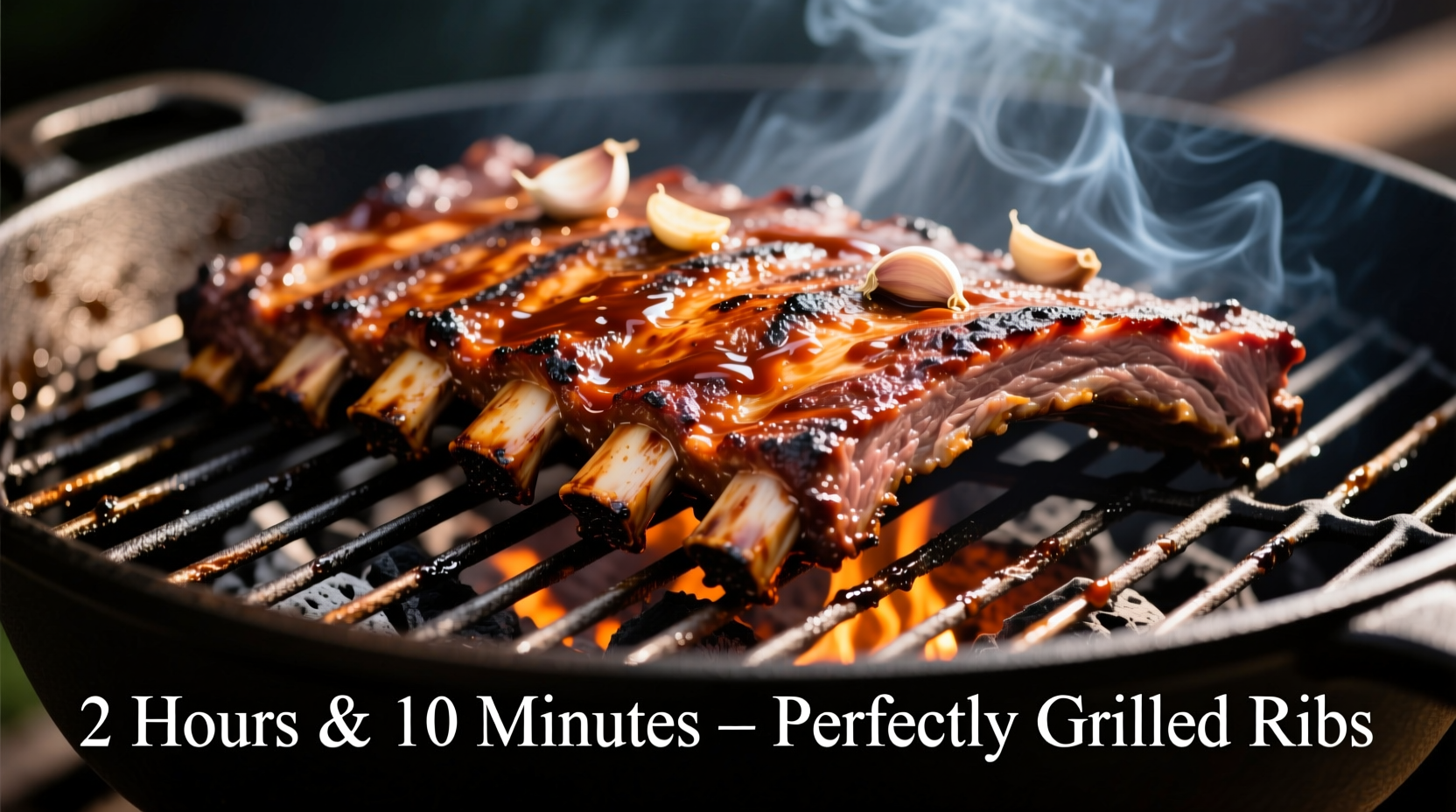Direct Answer: Baby back ribs typically take 2.5-3 hours on a grill at 225-250°F using indirect heat, while spare ribs need 3-4 hours. The exact time depends on rib thickness, grill temperature consistency, and desired tenderness. Always verify doneness with internal temperature (195-203°F) and the bend test, not just timing.
The Complete Guide to Perfectly Grilled Ribs Every Time
Nothing says summer barbecue like tender, fall-off-the-bone ribs. But getting that perfect balance of smoky flavor and melt-in-your-mouth texture can be tricky if you're relying solely on cooking timers. As someone who's grilled hundreds of racks across professional kitchens and backyard setups, I've learned that successful rib cooking combines precise timing with visual and tactile indicators.
Why Timing Alone Won't Guarantee Perfect Ribs
Many beginners make the critical mistake of setting a timer and walking away. Ribs vary significantly in thickness, fat content, and bone structure. Your grill's temperature consistency matters more than the clock. Even minor fluctuations of 25°F can add 30-45 minutes to your cooking time. That's why professional pitmasters use multiple doneness indicators, not just time.
| Rib Type | Weight Range | Recommended Grill Time | Internal Temp Target |
|---|---|---|---|
| Baby Back Ribs | 1.5-2.5 lbs | 2.5-3 hours | 195-203°F |
| Spare Ribs | 3-4 lbs | 3-4 hours | 200-205°F |
| St. Louis Cut | 2.5-3.5 lbs | 3-3.5 hours | 195-203°F |
This cooking time comparison chart reflects data from the USDA Food Safety and Inspection Service guidelines combined with professional pitmaster recommendations. Always verify with temperature readings as rib thickness varies significantly even within the same cut.
Essential Preparation Steps Before Lighting Your Grill
Proper preparation determines 50% of your rib's success. Start with these critical steps:
- Membrane removal: Peel off the tough membrane on the bone side using a butter knife to start the edge, then grip with paper towel for better traction
- Dry brine: Apply 1/2 teaspoon kosher salt per pound 12-24 hours before cooking for deeper flavor penetration
- Room temperature: Let ribs sit out for 30-45 minutes before grilling for more even cooking
The 4-Phase Grilling Timeline for Foolproof Results
Understanding the cooking timeline helps you anticipate when to check for doneness. Here's what happens during each phase:
- Phase 1 (First 60 minutes): Ribs absorb maximum smoke flavor. Maintain steady 225-250°F with wood chunks added at startup
- Phase 2 (60-120 minutes): Collagen begins breaking down. Surface reaches 160°F - the "stall" period begins where evaporation cools the meat
- Phase 3 (120-180 minutes): Internal temperature rises to 190°F+. Collagen converts to gelatin, creating tender texture
- Phase 4 (180+ minutes): Final tenderness phase. Internal temperature reaches 195-203°F for optimal texture
This temperature progression timeline aligns with food science research from the University of Illinois Food Science Department on collagen breakdown in pork. The critical transformation occurs between 190-205°F when connective tissues fully convert to gelatin.
How to Know When Ribs Are Perfectly Done (Beyond the Timer)
Timing provides a general guideline, but these three tests confirm perfect doneness:
- The bend test: Using tongs, lift the rack from one end. Properly cooked ribs will bend deeply, and cracks may form in the bark
- Meat retraction: The meat should have pulled back about 1/2 inch from the bone ends
- Internal temperature: Insert thermometer between bones to avoid false bone readings. Target 195-203°F for baby backs, 200-205°F for spares

Grill Type Considerations That Affect Cooking Time
Your grill type significantly impacts cooking time and technique:
- Charcoal grills: Require more attention to maintain temperature. Add fresh coals every 60-75 minutes. Expect slightly longer cooking times (15-20 minutes more) than gas
- Gas grills: Maintain more consistent temperatures. Use only one side burner for indirect heat setup
- Offset smokers: Provide superior smoke flavor but require careful airflow management. Cooking times align with standard guidelines when temperature is maintained
These context boundaries matter because a study by the Hearth, Patio & Barbecue Association found temperature fluctuations in charcoal grills average 35°F compared to 15°F in gas models, directly impacting cooking duration.
Avoid These 3 Common Rib Grilling Mistakes
Even with proper timing, these errors ruin otherwise good ribs:
- Peeking too often: Every time you lift the lid, temperature drops 25-35°F. Limit checking to necessary doneness tests
- Rushing the resting period: Rest ribs wrapped in foil for 20-30 minutes before serving. This allows juices to redistribute
- Applying sauce too early: Sugar in barbecue sauce burns at temperatures above 265°F. Add sauce only during the final 15-20 minutes
Temperature Troubleshooting Guide
When things don't go according to plan:
- Temperature stuck at 160°F (the stall): Normal phase where evaporation cools the meat. Be patient or wrap in foil to power through
- Cooking too fast (under 2 hours): Likely grill temperature too high. Move to cooler part of grill or reduce heat
- Cooking taking much longer than expected: Check for consistent temperature. Add charcoal or adjust gas as needed
Final Pro Tips for Rib Grilling Success
Implement these professional techniques for consistently excellent results:
- Use the Texas crutch method: Wrap ribs in foil with 1/4 cup apple juice after 90 minutes to speed cooking and add moisture
- Invest in a dual-probe thermometer to monitor both grill and meat temperatures simultaneously
- For extra tender ribs, cook to 203°F internal temperature rather than stopping at minimum safe temperature
- Always cook ribs bone-side down for more even heat exposure
Remember that USDA food safety guidelines state pork is safe to eat at 145°F with a 3-minute rest, but ribs require higher temperatures (195°F+) for proper texture. The higher temperature needed for ribs breaks down collagen into gelatin, creating that desirable fall-off-the-bone tenderness that wouldn't occur at standard pork cooking temperatures.











 浙公网安备
33010002000092号
浙公网安备
33010002000092号 浙B2-20120091-4
浙B2-20120091-4